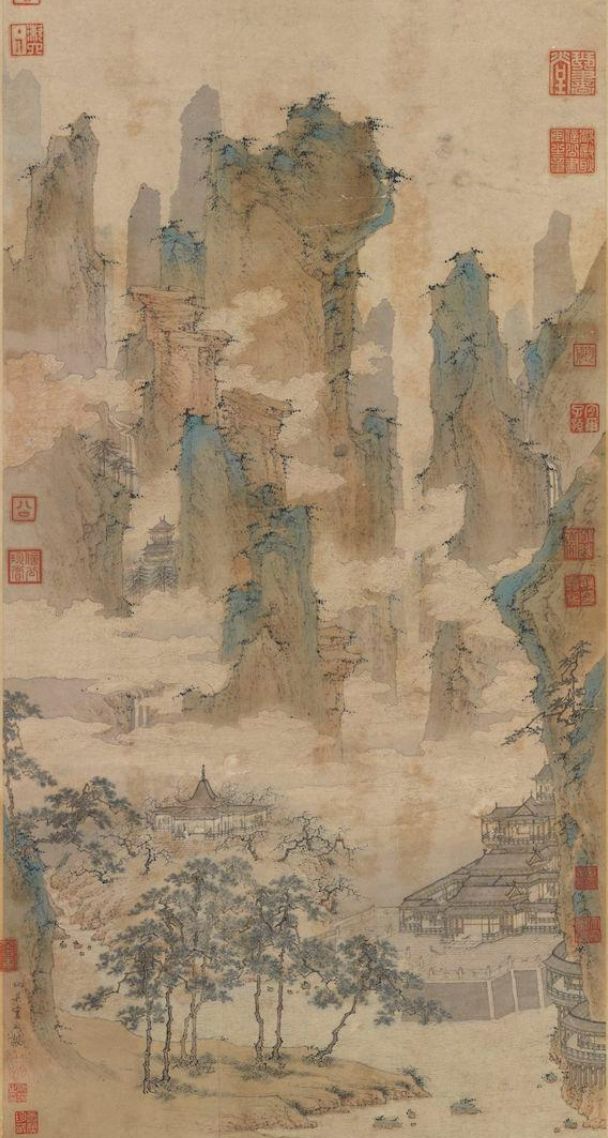To the east of Penglai(蓬萊) , there is a country called Yuyi, where golden mists frequently appear. The immortals say that this mountain often floats within the mist, sometimes rising high, sometimes hanging low.
Many buildings stand on the mountain, their windows usually facing towards the bright direction when the mist disperses, and all facing north when the mist vanishes.
文命忽見對面山上金霧迷漫,金霧之中,樓臺宮殿,窗戶洞開,不可勝計。隔了一會,金霧滅歇,房屋依然,而窗戶皆不見,仿佛如房屋之後面一般,甚不可解。大鵹道:「此地名叫郁夷國,是蓬萊山之東鄙,群仙居於此者不少。在山上所築的房屋皆能浮轉低昂,忽而朝南,忽而朝北,忽而高,忽而低,沒有一定,亦是仙家行樂之一法。」
~鐘毓龍 《上古秘史》, in the Qing Dynasty
I think the earliest record of that is in 《拾遺記》, will talk about that in the next thread.











